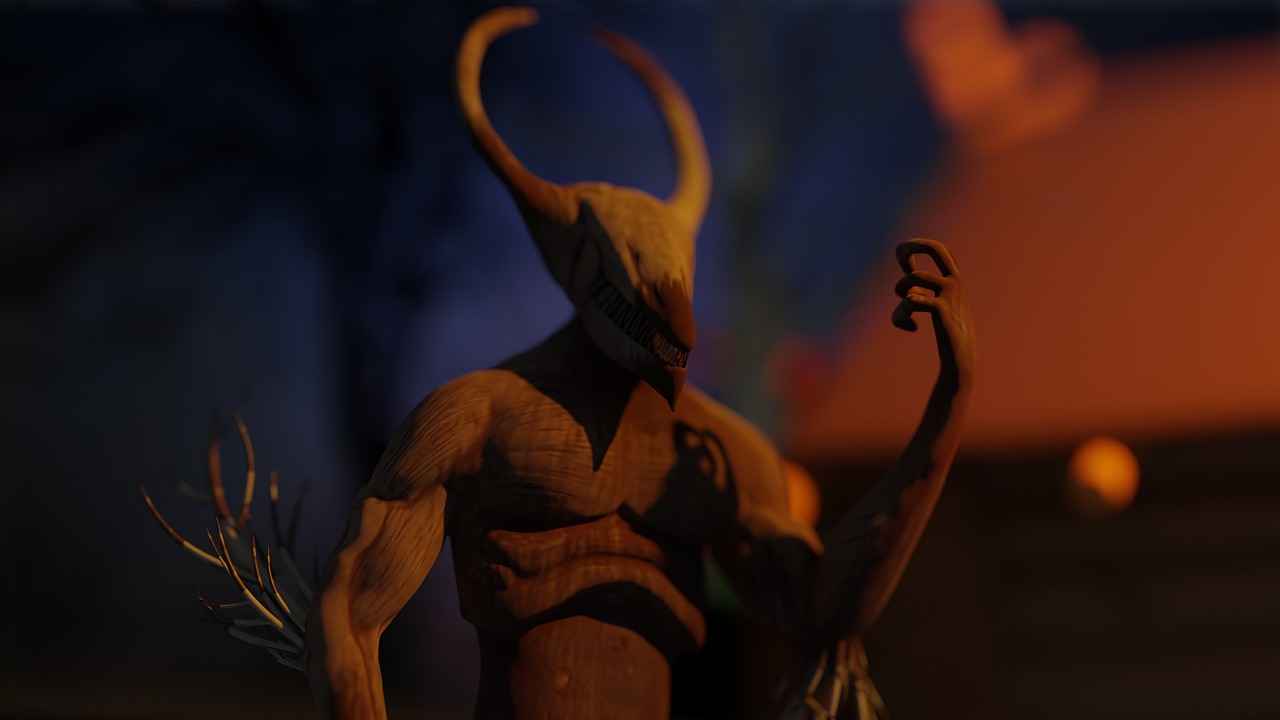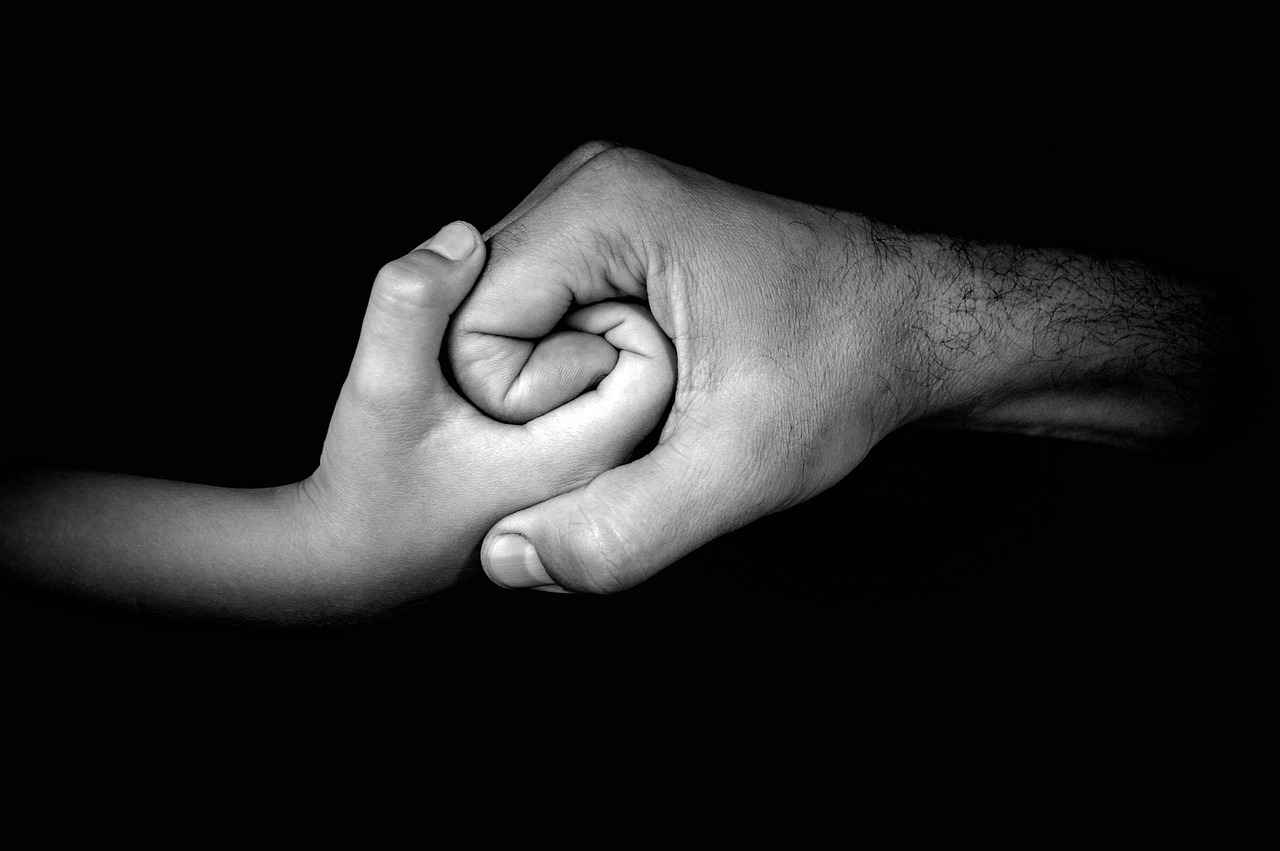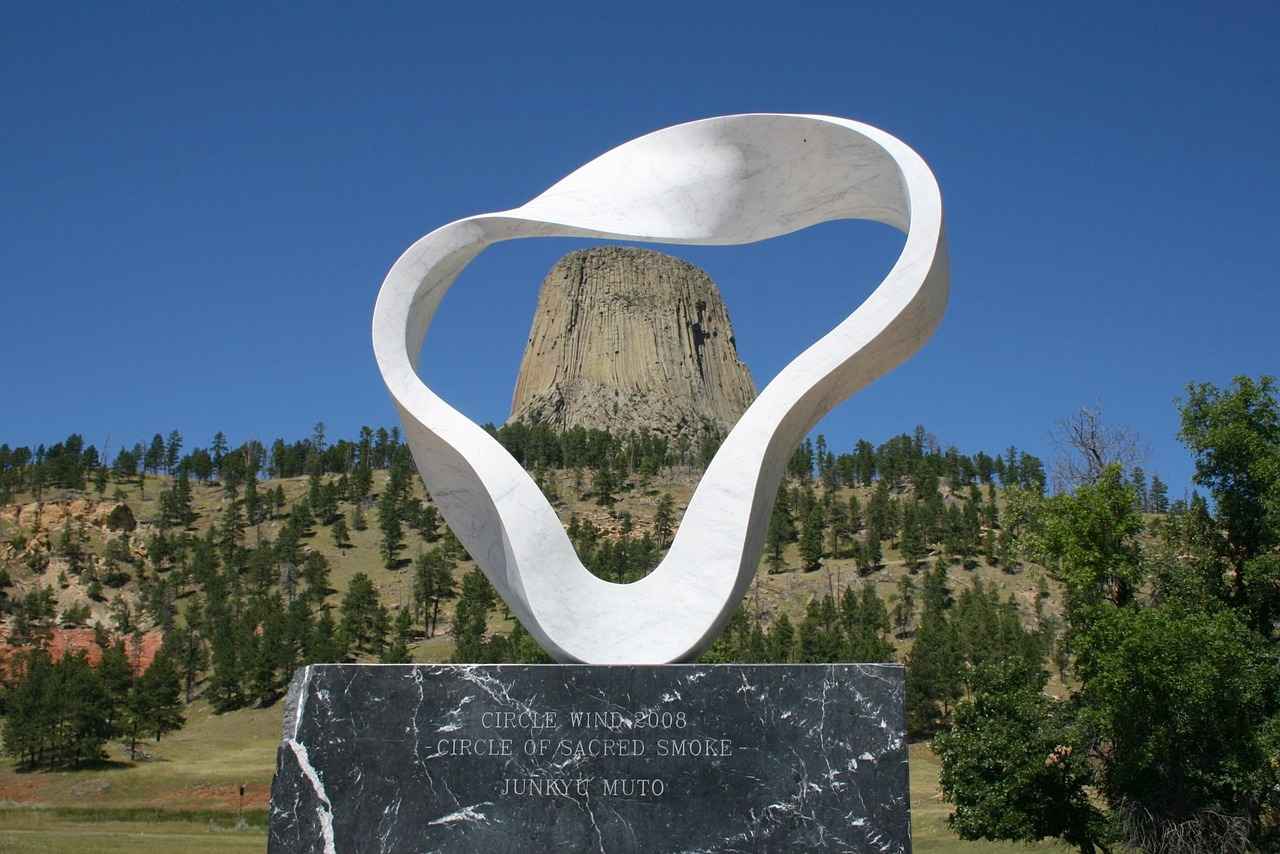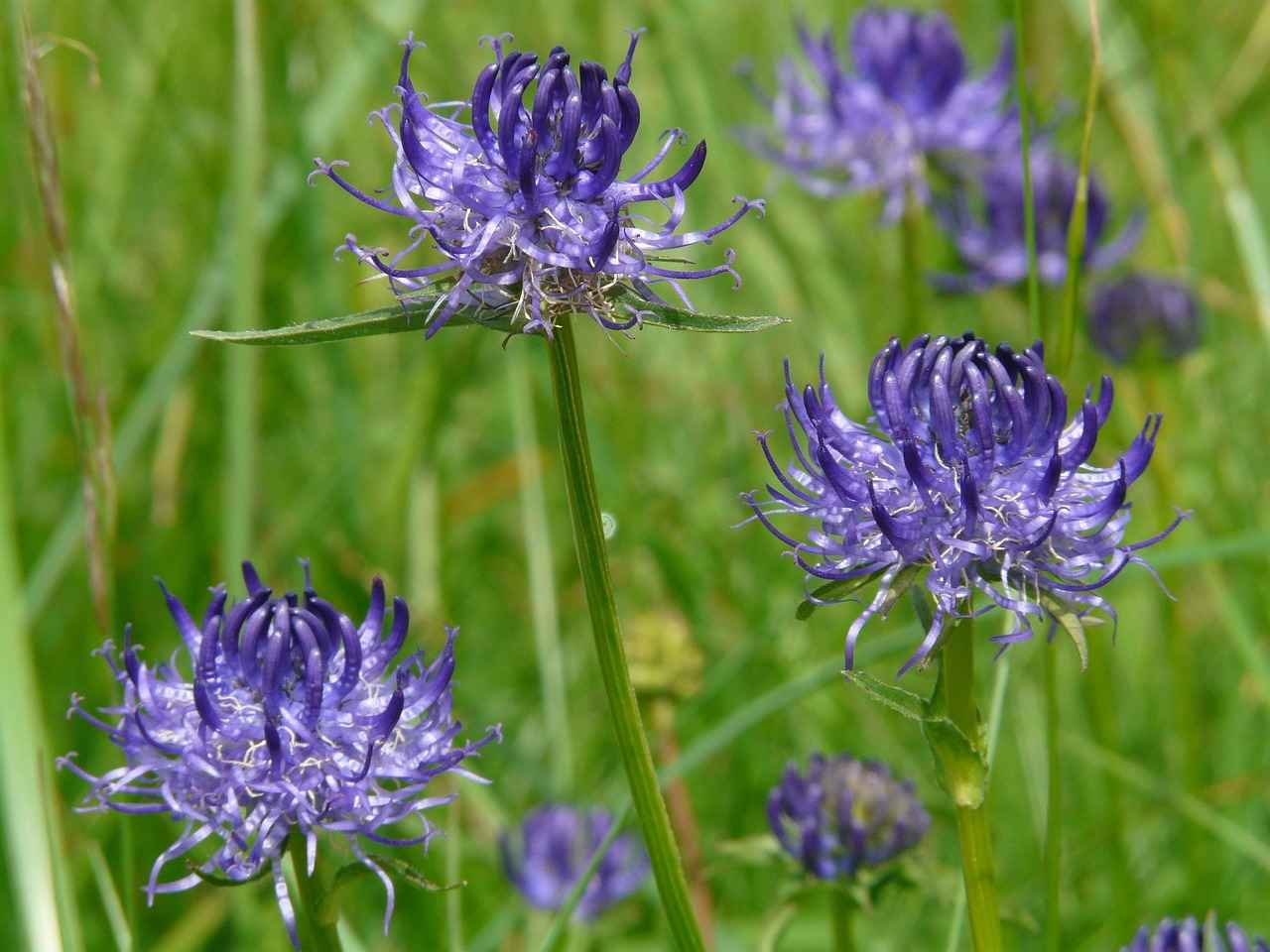This article delves into the fascinating narrative of being the Devil’s daughter, offering a unique perspective on her experiences and providing essential survival tips for navigating such a complex existence.
To thrive as the Devil’s daughter, it is crucial to understand the intricate legacy left by her father. This legacy is not merely about power and darkness; it encompasses a set of expectations and challenges that shape her identity. The weight of her lineage can feel overwhelming, but recognizing the duality of her heritage—both the advantages and the burdens—can help her navigate her path. The expectations from the underworld and the human realm create a unique tension that she must learn to balance.
The journey of the Devil’s daughter is marked by profound character development. Initially, she may feel trapped by her father’s shadow, struggling to carve out her own identity. As the narrative unfolds, she encounters various challenges that force her to confront her fears and question her morals. This journey is not just about rebellion; it is also about self-discovery and growth. Each choice she makes leads her closer to understanding who she truly is, separate from her father’s influence.
In her quest for survival, the Devil’s daughter must navigate a complex web of relationships. Identifying allies who can offer support and guidance is essential, as is recognizing potential enemies who may seek to exploit her vulnerabilities. Building trust takes time, and she must be discerning in her interactions. The dynamics of friendship and betrayal are heightened in her world, making it critical for her to develop a keen sense of judgment.
To thrive in a realm often defined by chaos and darkness, the Devil’s daughter must learn to harness her inherent dark powers. These abilities can serve as both a blessing and a curse, depending on how she chooses to wield them. Training and practice are essential, as she learns to control her powers rather than being controlled by them. This mastery not only enhances her survival but also empowers her to make choices that reflect her values.
Living as the Devil’s daughter presents numerous moral dilemmas. Each decision she faces is fraught with implications that can affect not only her life but also the lives of others. She is constantly challenged to define her sense of right and wrong, often in a world where traditional morals are blurred. These dilemmas force her to weigh her options carefully, fostering a deeper understanding of her own principles and ethics.
Survival in a hostile environment requires practical strategies. The Devil’s daughter must learn to navigate her surroundings, understanding the rules that govern both the underworld and the human realm. This includes recognizing threats, exploiting weaknesses, and adapting to changing circumstances. Knowledge of her environment can provide her with a significant advantage, allowing her to make informed decisions that enhance her chances of survival.
Creating a reliable support network is crucial for the Devil’s daughter. Surrounding herself with trustworthy allies who share her goals can provide her with the emotional and practical support she needs. This network can offer protection, resources, and companionship, making her journey less isolating. Identifying individuals who genuinely care for her, rather than those who seek to use her, is essential for her long-term survival.
Acceptance of her identity as the Devil’s daughter is vital. Embracing her lineage can empower her to confront her fears and challenges head-on. Rather than shying away from her heritage, she can redefine it on her own terms. This acceptance fosters resilience and confidence, allowing her to navigate her unique existence with a sense of purpose and strength.
A deep understanding of evil and its implications is necessary for the Devil’s daughter. This knowledge can help her navigate her world and make informed choices. By exploring the nuances of good and evil, she can better understand the motivations of those around her, allowing her to anticipate their actions and respond effectively.
Redemption is a recurring theme in her narrative. The Devil’s daughter may seek to redefine her path, pursuing acts that challenge her father’s legacy. This quest for redemption can lead her to unexpected places and relationships, ultimately shaping her into a more complex and relatable character.
Every choice she makes comes with consequences. The Devil’s daughter must learn to anticipate and manage the outcomes of her actions to survive. This awareness not only enhances her decision-making skills but also encourages her to take responsibility for her choices, fostering personal growth.
Ultimately, the journey of the Devil’s daughter is one of growth and transformation. The lessons she learns along the way shape her into a stronger, more resilient individual. By navigating her unique challenges, she emerges with a deeper understanding of herself and her place in the world, ready to face whatever comes next.

Understanding the Devil’s Legacy
To survive as the Devil’s daughter, one must first grasp the complexities of her father’s legacy, including the challenges and expectations that come with it. The Devil, often depicted as the embodiment of evil, leaves behind a multifaceted legacy filled with power, fear, and temptation. Understanding this legacy is crucial for the protagonist as it shapes her identity and influences her choices.
The legacy of the Devil is not just about darkness; it also encompasses the struggles of power. As the daughter of such a formidable figure, she inherits not only his abilities but also the weight of his reputation. This duality presents a unique challenge: she must navigate the world with the awareness that her lineage can be both a shield and a sword. For instance, the fear that others have of her father can be used to her advantage, opening doors and creating opportunities. However, it can also isolate her, making trust a rare commodity.
Moreover, the expectations placed upon her are immense. Society often expects the Devil’s offspring to embody the same malevolence as their parent. This pressure can lead to internal conflict, as she grapples with her own moral compass and the desire to forge an identity separate from her father’s shadow. Balancing these expectations while remaining true to herself is a critical aspect of her journey.
Additionally, understanding her father’s legacy involves recognizing the consequences of his actions. The Devil’s past choices have shaped the world around her, creating a landscape filled with enemies and allies alike. Each interaction is colored by the legacy of fear and respect that he commands. Thus, the Devil’s daughter must learn to navigate these complex relationships, discerning who may support her quest for independence and who may seek to undermine her.
In essence, to survive as the Devil’s daughter, she must delve deep into the intricacies of her father’s legacy. This involves embracing the strengths it provides while also acknowledging the challenges it poses. By doing so, she can carve out her own path, one that may defy the expectations set upon her. Ultimately, understanding this legacy is not just about survival; it’s about transformation and the power to redefine what it means to be the daughter of the Devil.

Character Development: The Protagonist’s Journey
The journey of the Devil’s daughter is a profound exploration of character development, where her path is filled with struggles, growth, and the essential choices that shape her identity. As she navigates the complexities of her lineage, she faces the duality of her existence—being both a product of darkness and a seeker of light.
Initially, she grapples with the weight of her father’s legacy, feeling the pressure to conform to the expectations set before her. This internal conflict is pivotal, as she learns that her identity does not solely depend on her heritage. Instead, she begins to realize that she has the power to redefine herself. This realization marks the beginning of her transformative journey.
Throughout her story, the Devil’s daughter encounters numerous challenges that test her resilience. These experiences, whether they involve betrayal by those she trusts or the temptation to succumb to her darker impulses, serve as catalysts for her growth. Each obstacle she faces forces her to make critical decisions, which ultimately contribute to her character development.
One significant aspect of her journey is her evolving perception of morality. As the daughter of the Devil, she is constantly confronted with moral dilemmas that challenge her understanding of right and wrong. These moments of choice are not merely about survival; they are opportunities for her to assert her values and beliefs. For instance, when faced with a situation where she could exploit her powers for personal gain, she must weigh the consequences of her actions against her desire for a more virtuous path.
Moreover, the relationships she cultivates along the way play a crucial role in her development. The allies she chooses to surround herself with can either uplift her or lead her astray. This dynamic forces her to develop discernment, learning to trust her instincts about who is truly on her side. Her interactions with others not only shape her understanding of loyalty and betrayal but also help her establish a support network that is vital for her survival.
As the narrative unfolds, the Devil’s daughter begins to embrace her identity, recognizing that her lineage does not dictate her fate. This acceptance empowers her to confront her fears and challenges with newfound strength. She discovers that by embracing her dark heritage, she can wield her powers responsibly, using them to protect those she cares about rather than to harm.
Ultimately, the journey of the Devil’s daughter is one of profound growth and transformation. The lessons she learns through her struggles and triumphs shape her into a resilient individual who is capable of navigating the complexities of her world. Her story serves as a testament to the idea that one’s identity is not predetermined but can be forged through choices, experiences, and the courage to embrace one’s true self.

The Role of Allies and Enemies
Navigating relationships is crucial for survival; understanding who can be trusted and who poses a threat can significantly impact the Devil’s daughter’s fate. In a world steeped in darkness and deception, the dynamics between allies and enemies become pivotal. The Devil’s daughter must develop a keen sense of discernment to identify those who genuinely support her and those who harbor ulterior motives.
Building trustworthy alliances can provide her with the strength and resources necessary to face the challenges that arise from her unique heritage. Allies can offer not only protection but also valuable insights into the complex world she inhabits. These individuals may come from unexpected backgrounds, including other supernatural beings or even humans with their own agendas. It is essential for her to recognize that not all who appear friendly are allies, and some may be disguised enemies waiting for the right moment to strike.
- Identifying Allies: Look for those who have proven themselves through actions rather than words. Trust is built over time, and a true ally will demonstrate loyalty and support consistently.
- Recognizing Enemies: Enemies often mask their intentions with charm and flattery. The Devil’s daughter should remain vigilant and observant, noting any inconsistencies in their behavior.
- Understanding Motivations: Every character in her story has their own motivations. By understanding what drives both allies and enemies, she can better navigate her relationships and make informed decisions.
The relationships she cultivates can also serve as a double-edged sword. Allies may have their own fears and insecurities, which can complicate their support. For instance, an ally might feel threatened by her potential or power, leading to jealousy or betrayal. On the other hand, enemies can exploit her vulnerabilities, using her connections against her. Therefore, it is essential to maintain a balance between trust and caution.
Moreover, the Devil’s daughter must be prepared to confront the reality that some relationships may need to be severed for her survival. This may involve making difficult choices, such as distancing herself from those who prove to be detrimental to her well-being. In her journey, she will learn that sometimes, the most challenging decisions are the ones that lead to personal growth and empowerment.
Ultimately, as she navigates the intricate web of relationships, the Devil’s daughter will discover that her ability to discern allies from enemies is not just a survival skill but a vital part of her identity. By embracing her lineage and understanding the nature of those around her, she can forge a path that honors her father’s legacy while defining her own.

Mastering Dark Powers
In the fascinating world of the Devil’s daughter, mastering dark powers is not merely a skill; it is a crucial aspect of survival. These powers, inherited from her infamous father, can serve as both a blessing and a curse. Understanding how to effectively harness them is essential for navigating the complexities of her existence.
The dark powers that the Devil’s daughter possesses are often misunderstood. They can manifest in various forms, including manipulation, illusion, and even elemental control. These abilities can be cultivated through practice and self-awareness. It is vital for her to recognize that these powers are not inherently evil; rather, it is the intention behind their use that determines their moral standing. By embracing her abilities, she can learn to wield them responsibly.
To master her dark powers, the Devil’s daughter must undergo rigorous training. This includes:
- Physical Conditioning: Strengthening her body to withstand the toll that using dark powers can take.
- Mental Fortitude: Developing a strong mind to resist the temptations that come with power.
- Practice: Regularly honing her abilities in a controlled environment to understand their limits.
Finding a mentor, possibly a former servant of her father or a wise figure from the underworld, can provide her with invaluable guidance.
As she learns to wield her powers, the Devil’s daughter must confront ethical dilemmas. The temptation to misuse her abilities for personal gain or revenge can be strong. It is crucial for her to establish a personal code of ethics that aligns with her values. This will not only help her navigate the challenges of her dark legacy but also define her character in the eyes of those around her.
Understanding the balance of power is essential. The Devil’s daughter must learn that with great power comes great responsibility. She should be aware of the potential consequences of her actions, not just for herself, but for those around her. The challenge lies in using her powers to protect rather than harm, to uplift rather than destroy.
Mastering dark powers also involves knowing when and how to apply them effectively. This includes:
- Defensive Techniques: Using her powers to shield herself from threats.
- Strategic Manipulation: Influencing events in her favor without drawing attention.
- Creating Alliances: Leveraging her abilities to forge beneficial partnerships.
By understanding these practical applications, the Devil’s daughter can navigate her world more effectively, turning potential threats into opportunities.
Lastly, mastering dark powers requires emotional control. The Devil’s daughter must learn to manage her feelings, especially anger and fear, which can amplify her powers. Techniques such as meditation, visualization, and deep breathing can aid in maintaining her composure. By mastering her emotions, she can prevent her powers from spiraling out of control and causing unintended harm.
In conclusion, mastering dark powers is a multifaceted journey for the Devil’s daughter. It requires understanding, training, ethical considerations, and emotional control. By embracing her abilities and learning to wield them wisely, she can navigate the complexities of her existence and define her own path.

Confronting Moral Dilemmas
Living as the Devil’s daughter is not merely about navigating a world infused with darkness; it is a profound exploration of moral dilemmas that challenge her very essence. Each decision she faces is steeped in the complexities of her lineage, forcing her to constantly reevaluate her understanding of right and wrong.
From an early age, she is confronted with choices that test her values. The expectations placed upon her by her father, the Devil, create a unique pressure to conform to a legacy of evil. However, she is not bound to follow this path blindly. Instead, her journey becomes one of self-discovery, where she must weigh her desires against the implications of her actions.
For instance, when faced with the opportunity to manipulate others for personal gain, she grapples with the ethical implications of such power. Is it justifiable to use her abilities to achieve her goals, even if it means causing harm to others? This internal struggle becomes a recurring theme, pushing her to seek a balance between her innate powers and her moral compass.
Moreover, the relationships she forms significantly influence her decision-making process. Allies may encourage her to embrace her darker instincts, while friends from her past may remind her of the values she once held. This dichotomy creates a rich tapestry of conflict, as she learns that the people around her can either uplift or lead her astray.
As she encounters various situations, the Devil’s daughter also discovers that forgiveness and redemption are powerful tools. By choosing to help those in need, she begins to redefine her identity beyond her father’s shadow. These choices not only challenge her understanding of evil but also allow her to explore the possibility of goodness within herself.
Ultimately, confronting these moral dilemmas shapes her character profoundly. Each decision, whether it leads to triumph or failure, becomes a stepping stone in her journey toward self-acceptance. The lessons learned through these trials are invaluable, teaching her that true strength lies in the ability to choose compassion over cruelty.
In essence, the life of the Devil’s daughter is a constant battle between her heritage and her desire to carve out her own path. The moral dilemmas she faces serve as catalysts for growth, pushing her to challenge the very nature of her existence. Through this struggle, she learns that while her lineage may be dark, her choices can illuminate a path toward a brighter future.

Survival Strategies in a Hostile Environment
The journey of the Devil’s daughter is fraught with challenges and obstacles that require a keen understanding of her surroundings. To thrive in such a hostile environment, she must employ practical survival strategies that are tailored to her unique circumstances. This section will delve into essential strategies that can help her navigate the complexities of her world.
One of the first steps in survival is to assess the environment. The Devil’s daughter needs to be aware of her surroundings, including the physical landscape, potential threats, and available resources. This can involve:
- Mapping out safe zones: Identifying areas where she can find shelter and safety is crucial.
- Recognizing danger zones: Understanding where enemies lurk or where traps may be set can prevent dangerous encounters.
- Resource identification: Knowing where to find food, water, and other essentials is vital for survival.
The Devil’s daughter must also be adaptable. Challenges can arise unexpectedly, and her ability to pivot and adjust her strategies will determine her success. This adaptability can include:
- Learning from experiences: Each encounter, whether good or bad, provides valuable lessons that can inform future decisions.
- Staying calm under pressure: Maintaining composure in stressful situations allows for clearer thinking and better decision-making.
- Utilizing her powers wisely: Her dark powers can be both a tool and a liability; understanding when to use them is key.
In a hostile environment, forming alliances can significantly enhance her chances of survival. Allies can provide support, information, and protection. Strategies for building alliances include:
- Identifying trustworthy individuals: Not everyone has her best interests at heart; discerning who to trust is essential.
- Offering value in return: Establishing mutually beneficial relationships can strengthen bonds and create loyalty.
- Maintaining open communication: Regularly engaging with allies ensures that everyone is on the same page and can respond effectively to threats.
In a world filled with danger, the Devil’s daughter must be prepared to defend herself. This involves:
- Training in combat: Developing physical skills can provide her with the confidence and ability to protect herself.
- Understanding her powers: Knowing the extent and limitations of her dark powers can help her use them effectively in self-defense.
- Creating escape plans: Having a strategy for quick exits in dangerous situations can be life-saving.
Knowledge is power. The Devil’s daughter must continuously seek information about her environment and the dynamics at play. This can involve:
- Listening to rumors: Keeping an ear to the ground can provide insights into potential threats or opportunities.
- Engaging with various communities: Interacting with different groups can broaden her understanding of the world.
- Staying updated on her father’s activities: Being aware of her father’s plans and movements can help her anticipate challenges.
In conclusion, survival as the Devil’s daughter requires a multifaceted approach that combines environmental awareness, adaptability, alliance-building, self-defense, and continuous learning. By implementing these strategies, she can navigate her hostile environment more effectively and secure her place in a world that constantly tests her resilience.

Building a Support Network
Creating a reliable support network is essential for anyone navigating a challenging life, especially for the Devil’s daughter. In her quest for independence and safety, she must identify and cultivate relationships with allies who can provide assistance, guidance, and protection. This network is not merely a collection of acquaintances; it is a vital lifeline that can significantly influence her survival and personal growth.
First and foremost, she should begin by assessing her current relationships. Who among her acquaintances can be trusted? Are there individuals who have shown loyalty or understanding in the past? Identifying these potential allies is the first step in building a robust support system. It is crucial for her to engage with those who share her values and aspirations, as these connections will be instrumental in her journey.
Next, she should consider expanding her network beyond her immediate circle. This could involve seeking out individuals with similar experiences or backgrounds. For example, connecting with others who have faced the challenges of being associated with powerful figures can provide invaluable insights and camaraderie. Attending gatherings, forums, or even online communities focused on empowerment and resilience can help her find like-minded individuals.
Moreover, forming alliances with those who possess unique skills or resources can be particularly advantageous. Perhaps there are mentors who can offer strategic advice or friends who have connections that could aid her in critical situations. By building a diverse network, the Devil’s daughter can ensure she has access to a wide range of support, from emotional encouragement to practical assistance.
However, it is essential for her to remain vigilant about the dynamics of her relationships. Not everyone who offers friendship has pure intentions. She must learn to discern between genuine allies and those who may seek to exploit her vulnerabilities. Establishing clear boundaries and being cautious about whom she entrusts with her secrets and fears will help her maintain control over her narrative.
In addition to identifying allies, the Devil’s daughter should also focus on nurturing these relationships. This involves mutual support, where she not only seeks help but also offers assistance to her allies. Building a foundation of reciprocity strengthens bonds and fosters loyalty, creating a more resilient support network.
Furthermore, it is vital for her to embrace vulnerability. Sharing her struggles and fears with trusted allies can lead to deeper connections and a sense of belonging. This openness encourages others to reciprocate, creating an environment where everyone feels safe to express their true selves.
Ultimately, the process of building a support network is ongoing. As her journey unfolds, she may encounter new individuals who can enrich her life. Remaining open to new connections while nurturing existing relationships will empower her to navigate the complexities of her existence as the Devil’s daughter.
In conclusion, establishing a reliable support network is not just beneficial; it is essential for the Devil’s daughter. By carefully selecting allies, expanding her connections, and nurturing these relationships, she can create a solid foundation that will aid her in her quest for independence and safety.

Embracing Her Identity
In the intricate tapestry of narratives surrounding the Devil’s daughter, is not merely an act of acceptance; it is a profound journey towards self-empowerment and resilience. This acceptance is vital in helping her confront the myriad fears and challenges that life presents. As she navigates her unique existence, understanding her lineage becomes a source of strength rather than a burden.
The concept of identity in this context is multifaceted. Being the daughter of the Devil comes with heavy expectations and societal prejudices. However, by acknowledging her heritage, she can transform these perceived weaknesses into formidable strengths. Embracing her identity allows her to draw from the rich history of her lineage, using it as a foundation to build her own narrative.
Moreover, this journey of acceptance involves a deep exploration of her inner self. It pushes her to confront the complexities of her character, including the darker aspects that may be inherited from her father. Instead of shying away from these traits, she learns to harness them, recognizing that they can be tools for empowerment. This realization is crucial as it enables her to face adversities with a sense of purpose and determination.
In embracing her identity, the Devil’s daughter also learns the importance of self-acceptance. This process is often fraught with challenges, as societal norms and expectations can impose limitations on her self-perception. However, by standing firm in her identity, she not only defies these constraints but also sets an example for others who may feel marginalized or misunderstood. This act of defiance becomes a form of empowerment, inspiring her to challenge the status quo and redefine what it means to be the daughter of the Devil.
Furthermore, embracing her identity opens doors to understanding her unique powers. As she learns to navigate the complexities of her abilities, she realizes that they are not just inherited traits but also extensions of her will and determination. This newfound understanding allows her to confront her fears with confidence, turning potential vulnerabilities into sources of strength.
In conclusion, the journey of embracing her identity as the Devil’s daughter is a pivotal aspect of her character development. It is through this acceptance that she gains the courage to face her fears and challenges head-on. By recognizing the power of her lineage and using it to forge her own path, she transforms her narrative from one of struggle to one of empowerment. This journey not only shapes her character but also serves as a beacon of hope for those who find themselves grappling with their identities in a world that often seeks to define them.

Understanding the Nature of Evil
To truly navigate the complexities of her existence, the Devil’s daughter must develop a profound understanding of evil and its far-reaching implications. This knowledge not only shapes her identity but also influences her decisions and interactions in a world that often sees her as a mere extension of her father’s legacy.
At its core, evil is not merely a concept, but a multifaceted phenomenon that encompasses various dimensions of human behavior and morality. By exploring the root causes of evil, the Devil’s daughter can better comprehend her own lineage and the expectations placed upon her. This understanding is crucial, as it allows her to differentiate between the inherent nature of her father and her own potential for goodness or redemption.
One of the first steps in this journey is recognizing that evil often stems from fear, ignorance, and desperation. Many individuals who commit acts deemed evil do so out of a desire to protect themselves or their loved ones. By analyzing these motivations, the Devil’s daughter can cultivate empathy, which may guide her in making more informed choices about her own actions.
- Understanding Evil as a Spectrum: Evil exists on a spectrum, ranging from minor transgressions to heinous acts. This spectrum illustrates that not all actions are black and white, and understanding this can help her navigate her moral landscape.
- Historical Context: Throughout history, various cultures have defined evil in different ways. By studying these perspectives, the Devil’s daughter can gain insights into how societal norms shape our understanding of right and wrong.
- The Role of Power: Power dynamics play a significant role in the manifestation of evil. Recognizing how power can corrupt and lead to malevolent actions is essential for her to avoid repeating the mistakes of her father.
Furthermore, the Devil’s daughter must confront her own dark powers. These abilities can be both a blessing and a curse, and understanding their nature is essential for her survival. By mastering her powers, she can choose to use them for positive outcomes rather than succumbing to the darker impulses that may arise from her lineage.
In addition to personal reflection, the Devil’s daughter should seek guidance from allies who can provide different perspectives on evil. Engaging in dialogues with individuals who have faced moral dilemmas can offer her valuable insights into the complexities of human nature and the choices that define us.
Ultimately, a deep understanding of evil will empower the Devil’s daughter to make choices that reflect her true self, rather than merely acting as a puppet of her father’s will. This journey of self-discovery and moral exploration is crucial for her to carve out her own path in a world filled with challenges and temptations.
By embracing this knowledge, she can navigate her world with greater clarity and confidence, making informed decisions that align with her values and aspirations. The implications of evil are vast, but with a solid understanding, the Devil’s daughter can emerge not just as a figure of darkness, but as a beacon of light in her own right.

Exploring Redemption Themes
Redemption is a powerful and recurring theme in the narrative of the Devil’s daughter. Within her journey, she grapples with the weight of her father’s notorious legacy, which often casts a long shadow over her identity. As she navigates this complex world, she finds herself at a crossroads where she must redefine her path and seek opportunities that challenge the very essence of what her father represents.
Throughout the story, the Devil’s daughter embarks on a quest for self-discovery. This journey is not merely about escaping her father’s influence; it is about embracing her own values and beliefs. She realizes that to carve out her own identity, she must confront the darkness that has been bestowed upon her and make choices that reflect her desire for redemption.
One of the most significant aspects of her journey is the acts of defiance she undertakes against her father’s legacy. These acts are not just rebellious; they are transformative. By choosing to help those in need, stand up against injustice, and challenge the status quo, the Devil’s daughter begins to reshape her narrative. Each decision she makes is a step toward reclaiming her autonomy and breaking free from the chains of her lineage.
Moreover, the theme of redemption is intricately tied to her interactions with others. The relationships she builds along the way serve as a mirror, reflecting her internal struggles and growth. Allies become crucial in her journey, providing support and encouragement as she navigates the treacherous waters of her existence. Through these connections, she learns the value of compassion and the importance of standing up for what is right.
As the Devil’s daughter confronts her past, she also faces numerous moral dilemmas. Each choice she makes carries weight, and the consequences of her actions often challenge her understanding of good and evil. In this context, redemption becomes not just a personal goal but a necessary journey for her survival. She must reconcile her heritage with her aspirations, leading to a profound transformation that shapes her character.
Ultimately, the exploration of redemption themes in the narrative highlights the complexity of identity and the power of choice. The Devil’s daughter learns that her past does not have to define her future. By actively seeking to redefine her legacy, she not only seeks personal redemption but also inspires others to challenge their own circumstances. This journey of self-acceptance and transformation is a testament to the resilience of the human spirit, illustrating that even those born into darkness can find their way into the light.

Facing the Consequences of Choices
In the intricate tapestry of life as the Devil’s daughter, every decision carries weighty consequences. This reality shapes her existence, making it imperative for her to navigate her choices with foresight and wisdom. Understanding that her actions ripple through both her world and the lives of those around her is a crucial survival skill.
First and foremost, the Devil’s daughter must develop a keen sense of awareness regarding the potential outcomes of her actions. Every choice, whether seemingly trivial or monumental, can lead to unforeseen repercussions. This understanding is not merely academic; it is a fundamental aspect of her survival. For instance, a decision made in haste, driven by emotion or impulse, can result in dire consequences that may haunt her for years to come.
Moreover, the weight of her lineage adds another layer of complexity. As the child of the Devil, she is often scrutinized and judged by others. This scrutiny means that her choices are amplified, and the consequences can be magnified. She must learn to anticipate not only her own reactions but also how others will perceive and respond to her actions. This requires a delicate balance of confidence and caution.
To effectively manage the outcomes of her choices, the Devil’s daughter can employ several strategies:
- Reflective Decision-Making: Before acting, she should take time to reflect on the potential consequences. This can involve considering the perspectives of others affected by her choices.
- Seeking Counsel: Building relationships with trusted allies can provide her with insights and advice that help her navigate difficult decisions.
- Learning from Mistakes: Each mistake is an opportunity for growth. By analyzing past choices and their outcomes, she can refine her decision-making process.
- Emotional Regulation: Managing her emotions is crucial. Decisions driven by anger or fear may lead to regrettable consequences.
Additionally, the Devil’s daughter must confront the moral implications of her choices. As the bearer of her father’s legacy, she faces moral dilemmas that challenge her understanding of good and evil. Choosing to act with integrity can set her apart from the darker aspects of her heritage. By consciously making choices that align with her values, she can carve out her own identity, distinct from her father’s shadow.
Ultimately, the ability to face and manage the consequences of her choices will define her journey. The Devil’s daughter must embrace the reality that while she cannot control every outcome, she can control her responses and learn from each experience. Through this process, she will grow stronger, wiser, and more resilient, shaping her destiny in a world fraught with challenges.

Lessons Learned: Growth and Transformation
The journey of the Devil’s daughter is a profound exploration of personal growth and transformation. Throughout her experiences, she encounters numerous challenges that force her to confront her identity and the legacy of her father. Each trial she faces serves as a crucial lesson, shaping her into a more resilient and self-aware individual.
Initially, the Devil’s daughter grapples with the weight of her father’s reputation. She is often viewed through the lens of his actions, leading to a struggle for her own identity. This internal conflict is a common theme in her journey. As she navigates her existence, she learns the importance of self-acceptance. Embracing her lineage does not mean she has to replicate her father’s choices; instead, it empowers her to carve out her own path.
- Emotional Intelligence: One of the most significant lessons she learns is the value of emotional intelligence. By understanding her own emotions and those of others, she can better navigate complex relationships. This skill becomes essential as she identifies who her true allies are and who may betray her.
- Resilience: The trials she faces are not merely obstacles but opportunities for growth. Each setback teaches her resilience, enabling her to bounce back stronger. This characteristic becomes a defining aspect of her identity, allowing her to face future challenges with courage.
- Morality and Ethics: As she confronts moral dilemmas, the Devil’s daughter learns to define her own sense of right and wrong. These experiences challenge her beliefs and force her to consider the implications of her actions, ultimately leading her to a more nuanced understanding of morality.
Moreover, her journey is filled with encounters that highlight the importance of forgiveness and redemption. The Devil’s daughter discovers that even those who seem irredeemable can change, and this realization allows her to let go of past grievances. By forgiving others, she frees herself from the shackles of resentment, which only hinders her growth.
Throughout her evolution, the Devil’s daughter also learns the significance of community. Building a support network is crucial for her survival. She realizes that she does not have to face her challenges alone; instead, she can rely on the strength of her allies. This sense of belonging fosters her growth and helps her navigate the treacherous waters of her existence.
Ultimately, the lessons learned by the Devil’s daughter are not just about survival; they are about thriving. Her journey transforms her from a girl burdened by her father’s legacy into a powerful woman who understands her worth. The growth she experiences is a testament to the strength of the human spirit, illustrating that even in the shadow of darkness, one can emerge into the light.
Frequently Asked Questions
- What are the main challenges faced by the Devil’s daughter?
The Devil’s daughter grapples with the weight of her father’s legacy, facing expectations and judgments from both allies and enemies. She must navigate a world filled with moral dilemmas and the constant threat of betrayal, making her journey both perilous and transformative.
- How does she develop her dark powers?
Mastering her dark powers requires dedication and practice. The Devil’s daughter learns to harness these abilities through experience, trial and error, and guidance from trusted allies. This journey is not just about power, but also about understanding the implications of wielding such strength.
- What role do allies play in her survival?
Allies are crucial for the Devil’s daughter, providing support, guidance, and protection. Building a reliable network helps her navigate the complexities of her existence, as they can offer insights into potential threats and help her make informed decisions.
- Can she find redemption despite her lineage?
Yes! The quest for redemption is a significant theme in her journey. The Devil’s daughter has the opportunity to redefine her path, challenging her father’s legacy by pursuing acts of good and seeking to understand the nature of evil and its consequences.
- What lessons does she learn throughout her journey?
Throughout her journey, the Devil’s daughter learns vital lessons about identity, power, and the impact of choices. These experiences shape her into a more resilient and self-aware individual, ultimately leading to significant personal growth and transformation.


